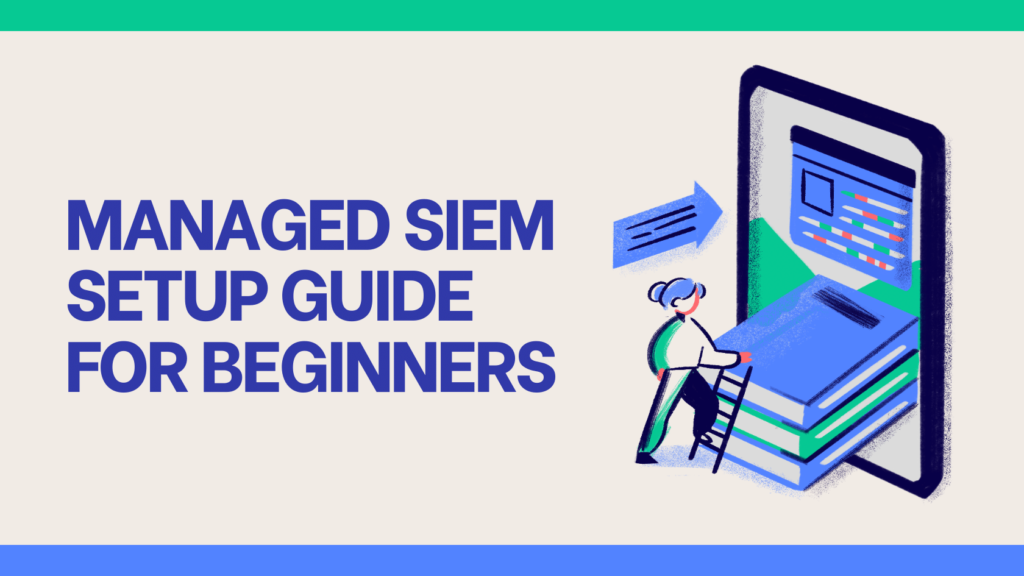KEY TAKEAWAYS
Managed SIEM, short for Managed Security Information and Event Management, is a comprehensive approach to security operations.
It involves outsourcing security monitoring, threat detection, and incident response to a third-party provider. Essentially, instead of handling these tasks internally, organizations enlist the expertise of external specialists who possess the knowledge, resources, and technology to safeguard their digital assets effectively.
Managed SIEM offers several advantages over traditional in-house security operations.
First and foremost, it provides access to expert knowledge and skills that may not be available in-house.
Managed service providers specialize in cybersecurity, employing professionals well-versed in the latest threats, trends, and techniques.
Moreover, managed SIEM services typically operate 24/7, ensuring continuous monitoring and rapid response to any security incidents, regardless of the time of day or night.
Additionally, managed SIEM can be more cost-effective than maintaining an internal security team, especially for small to medium-sized businesses that may not have the resources to hire dedicated security personnel.
When selecting a managed SIEM provider, conducting thorough research and considering various factors is crucial. Reputation is paramount—look for providers with a proven track record of delivering high-quality services and customer satisfaction.
Expertise is another essential consideration; ensure that the provider has experience in your industry and can effectively address your specific security needs.
Compatibility and managing the challenges with integrating your existing infrastructure is also crucial; the chosen provider should seamlessly integrate with your systems and technologies without causing disruptions or compatibility issues.
Finally, scalability, support services, and pricing should be considered when evaluating potential providers.
The initial setup process begins once you’ve chosen a managed SIEM provider. This typically involves a few key steps.
First, the provider will assess your current security posture to identify any vulnerabilities or weaknesses.
Next, they’ll work with you to configure the SIEM platform according to your organization’s needs and requirements. This may include setting up log collection and analysis, defining alerting thresholds, and configuring incident response workflows.
Finally, the provider will integrate the SIEM platform with your existing systems and technologies, ensuring seamless operation and interoperability.

Central to any SIEM setup is collecting and analyzing logs from various sources within your network.
Managed service providers handle this process, ensuring all relevant data is captured and analyzed in real time.
Logs may include information from firewalls, intrusion detection systems, servers, endpoints, and other network devices.
SIEM platforms can identify patterns, anomalies, and potential security threats by aggregating and correlating this data.
Managed SIEM providers use advanced analytics and machine learning algorithms to detect potential threats within your environment.
These may include malware infections, unauthorized access attempts, insider threats, and other suspicious activities.
When a security incident is detected, the SIEM platform generates alerts and notifications, prompting the appropriate response from your organization or the managed service provider.
This may include isolating affected systems, blocking malicious traffic, and conducting forensic analysis to determine the incident’s root cause.
Regular maintenance and updates are essential to ensure optimal performance.
Managed service providers handle this aspect, ensuring your SIEM platform remains up-to-date with the latest security patches and threat intelligence feeds.
This helps mitigate known vulnerabilities and protects your organization against emerging threats.
Additionally, regular maintenance helps optimize performance and efficiency, ensuring that your SIEM platform operates smoothly and effectively.
False positives can overwhelm your security team and lead to alert fatigue.
Managed SIEM providers work with you to fine-tune alerting thresholds and reduce false positives, ensuring you only receive actionable alerts.
This may involve adjusting alert severity levels, refining correlation rules, and customizing alerting criteria based on your organization’s unique risk profile.
Focusing on relevant and high-priority alerts can streamline your incident response process and allocate resources more effectively.
Even with a managed SIEM solution, employee training and awareness are crucial.
Educate your team about common security threats and best practices for maintaining a secure work environment.
This may include training sessions, awareness campaigns, and regular updates on emerging threats and trends.
By fostering a culture of security awareness, you can empower your employees to identify and report potential security incidents, helping to strengthen your overall security posture.
Periodic security audits help identify potential vulnerabilities and weaknesses in your infrastructure.
Work with your managed service provider to conduct comprehensive audits and address issues.
This may involve reviewing configuration settings, assessing access controls, and conducting penetration testing to identify potential entry points for attackers.
By proactively addressing security risks, you can minimize the likelihood of a successful cyberattack and safeguard your organization’s sensitive data and assets.
SIEM refers to the technology and processes used to monitor, detect, and respond to security events. Managed SIEM, on the other hand, involves outsourcing these tasks to a third-party provider.
The cost of managed SIEM varies depending on factors such as the size of your organization, the level of service required, and the complexity of your infrastructure. It’s best to contact providers directly for pricing information tailored to your specific needs.
Yes, managed SIEM solutions are designed to integrate seamlessly with your existing security tools and infrastructure. Your provider will work with you to ensure smooth integration and interoperability.
Managed SIEM providers typically offer rapid detection and response times, often within minutes of a security event occurring. However, response times may vary depending on the nature and severity of the threat.
Managed SIEM providers offer comprehensive support services, including 24/7 monitoring, incident response, and ongoing maintenance and updates. They are available to assist with any security-related issues or questions that may arise.
Yes, managed SIEM solutions can be tailored to meet the needs of businesses of all sizes, including small and medium-sized enterprises. They offer scalable solutions that grow with your business and provide enterprise-level security capabilities at an affordable price.
We provide a range of cyber security professional and managed services. We will work with you to create the solution that manages your needs, your way.
Address: 4412 14th Ave, Markham, ON L6G 1C6
Phone: (647) 360-1551